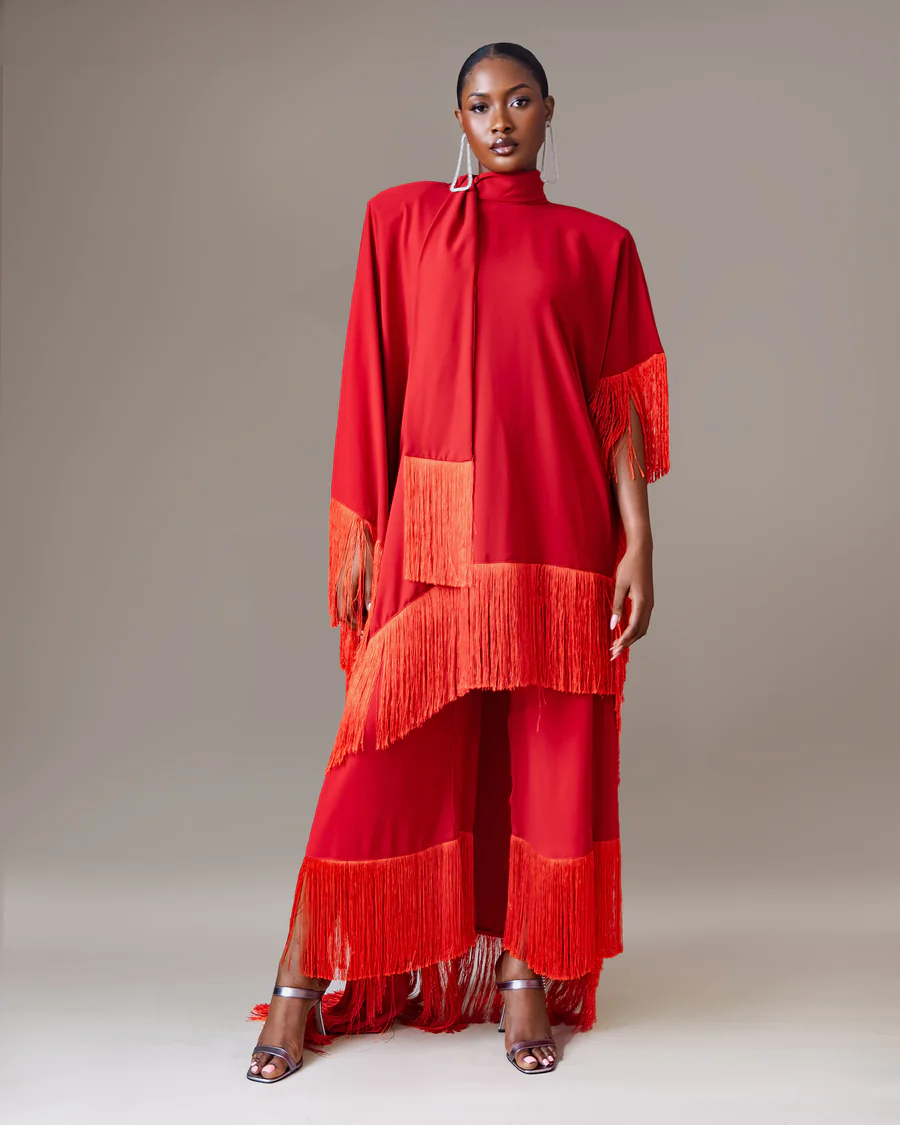Elevate Your Wardrobe: The Tunic's Enduring Appeal Draped in History
In this enlightening article, we delve into the world of tunics, those timeless and versatile garments that have graced fashion history for centuries. From ancient Greece to modern-day wardrobes, tunics have transcended cultures and styles. Learn about their rich historical background, various tunic styles, the materials they're crafted from, and how to stylishly incorporate them into your wardrobe. Whether you're seeking a casual, bohemian vibe or a more formal look, discover the ultimate guide to rocking the tunic with ease and grace.
Exploring the World of Tunics

Tunics have been a timeless and versatile piece of clothing that has transcended various cultures and fashion eras. The term "tunic" can refer to a wide range of garments, but in its most common form, a tunic is a loose-fitting, knee-length or longer shirt with short or long sleeves.
Historical Background
Tunics have a rich history that dates back thousands of years. They have been worn by people from different cultures and regions. In ancient Greece, the chiton was a type of tunic, often made from linen, and draped in various ways to suit the wearer's style. In the Roman Empire, both men and women wore tunics as a staple garment. The tunic has also been an essential part of traditional clothing in many cultures around the world, from India to Africa.

Styles of Tunics
Tunics come in a wide variety of styles, which makes them suitable for different occasions and fashion preferences. Here are some common tunic styles:
- A-line Tunic: This style is narrower at the top and widens towards the hem, creating an "A" shape. It's flattering for most body types and offers a comfortable and relaxed fit.
- Tunic Dress: A tunic dress is a longer version of a tunic that can be worn as a dress. It's a popular choice for casual outings and can be paired with leggings or tights.
- Bohemian Tunic: These tunics often feature vibrant and colorful patterns, fringes, and embroidery. They have a free-spirited and artistic vibe, making them perfect for festivals and beachwear.
- Kaftan Tunic: Kaftans are loose, flowing tunics with origins in the Middle East. They are comfortable and ideal for warm weather. They often feature intricate designs and are suitable for both casual and formal occasions.
- High-Low Tunic: This style has a shorter front and a longer back, creating a unique and modern look. High-low tunics are often chosen for their stylish asymmetry.
Materials
Tunics come in a wide range of materials, each offering different textures, comfort, and durability. Common tunic materials include:
- Cotton: Lightweight and breathable, cotton tunics are perfect for hot weather and casual wear.
- Linen: Linen tunics are comfortable and cool, making them a great choice for summer. They have a slightly relaxed, wrinkled look that adds to their charm.
- Silk: Silk tunics are elegant and luxurious, suitable for formal occasions or special events.
- Rayon: Rayon tunics combine the comfort of natural fibers with a soft, draping quality, making them versatile and easy to wear.
- Chiffon: Chiffon tunics are lightweight and semi-sheer, often chosen for their ethereal and delicate appearance.
How to Wear Tunics
Wearing a tunic can be both fashionable and comfortable if done right. Here are some tips for styling tunics:
- Leggings or Skinny Jeans: Pair your tunic with leggings or skinny jeans for a balanced and stylish look.
- Belt It: To add definition to your waist, use a belt to cinch the tunic. This works particularly well with flowy tunics.
- Layering: Tunics can be layered with jackets, cardigans, or vests for added warmth and style.
- Accessories: Statement jewelry, scarves, and a great pair of shoes can elevate your tunic outfit.
Top Countries Known For Wearing Tunics
Tunics have been worn by people across the globe, and their popularity is not limited to specific countries. However, certain regions and cultures have a strong historical and contemporary association with wearing tunics. Some of these regions include:
India: The traditional Indian tunic, known as the "kurta" or "kurti," is widely worn by both men and women. It is an integral part of Indian clothing, often paired with various types of bottoms.
Greece: The chiton, a type of tunic, was a common garment in ancient Greece and is still associated with Greek culture, particularly in the context of historical reenactments and festivals.
Middle Eastern and North African Countries: Countries in this region, such as Morocco and Egypt, have a rich history of wearing tunics like kaftans and djellabas, which are still worn today.
Mediterranean Countries: Tunics and similar loose-fitting garments are popular in Mediterranean countries like Turkey, Spain, and Italy. For example, the "tunica" in Italy is an iconic piece of clothing.
Western Countries: In Western fashion, tunics have gained popularity in recent decades, with various styles and materials, often as casual or beachwear.
African Countries: Many African countries have a tradition of wearing tunics. Dashikis and similar garments are prevalent in countries like Nigeria and Ghana.
South and Southeast Asia: Countries like Thailand and Indonesia have their own variations of tunics, known as "kurtas" and "kebayas," respectively.
While tunics have a global presence, the specific styles and names may vary across regions and cultures. The adaptability and comfort of tunics have contributed to their widespread popularity, making them a universal fashion choice.

FAQ
What is the definition of a tunic?
What does tunic look like?
What are the three types of tunics?
Is tunic for male or female?
Can girls wear tunics?
Can a tunic be a dress?
Do people wear tunics?
Definition of a Tunic:
A tunic is a type of loose-fitting garment that typically extends to knee-length or longer. It can have short or long sleeves and is characterized by its relaxed and comfortable fit. Tunics can be made from various materials and come in a wide range of styles, making them versatile clothing choices.
What Does a Tunic Look Like:
Tunics vary in appearance depending on their style, but they generally have a loose and flowing silhouette, often with a straight or A-line shape. They can have a variety of necklines and sleeve lengths. The specific look of a tunic can differ based on the design, material, and cultural influences.
Three Types of Tunics:
There are numerous types of tunics, but three common categories are A-line tunics, tunic dresses, and kaftan tunics. A-line tunics are narrower at the top and widen towards the hem. Tunic dresses are longer versions of tunics that can be worn as dresses. Kaftan tunics are loose and flowing garments with Middle Eastern origins.
Tunic for Male or Female:
Tunics are unisex garments and can be worn by both males and females. They have been a part of traditional clothing in various cultures for people of all genders.
Can Girls Wear Tunics:
Yes, girls can wear tunics. Tunics are versatile and come in sizes and styles suitable for people of all ages, including children. They can be a comfortable and fashionable choice for girls.
Can a Tunic Be a Dress:
Yes, a tunic can be worn as a dress, especially if it is longer in length. Tunic dresses are a popular style choice and are often paired with leggings or tights for a stylish and comfortable outfit.
Do People Wear Tunics:
Yes, people wear tunics all around the world. Tunics have been a part of various cultures and have stood the test of time due to their comfort and versatility. They are commonly worn in both casual and formal settings, making them a popular clothing option for many individuals.
Tunics are a versatile and timeless addition to any wardrobe. Whether you prefer a casual, bohemian look or a more refined, formal style, there's a tunic for every occasion. By understanding the history, styles, materials, and how to wear them, you can make the most of this versatile garment and express your personal fashion sense. So, the next time you're looking for an effortlessly chic and comfortable outfit, consider reaching for a tunic – a classic piece that never goes out of style.



